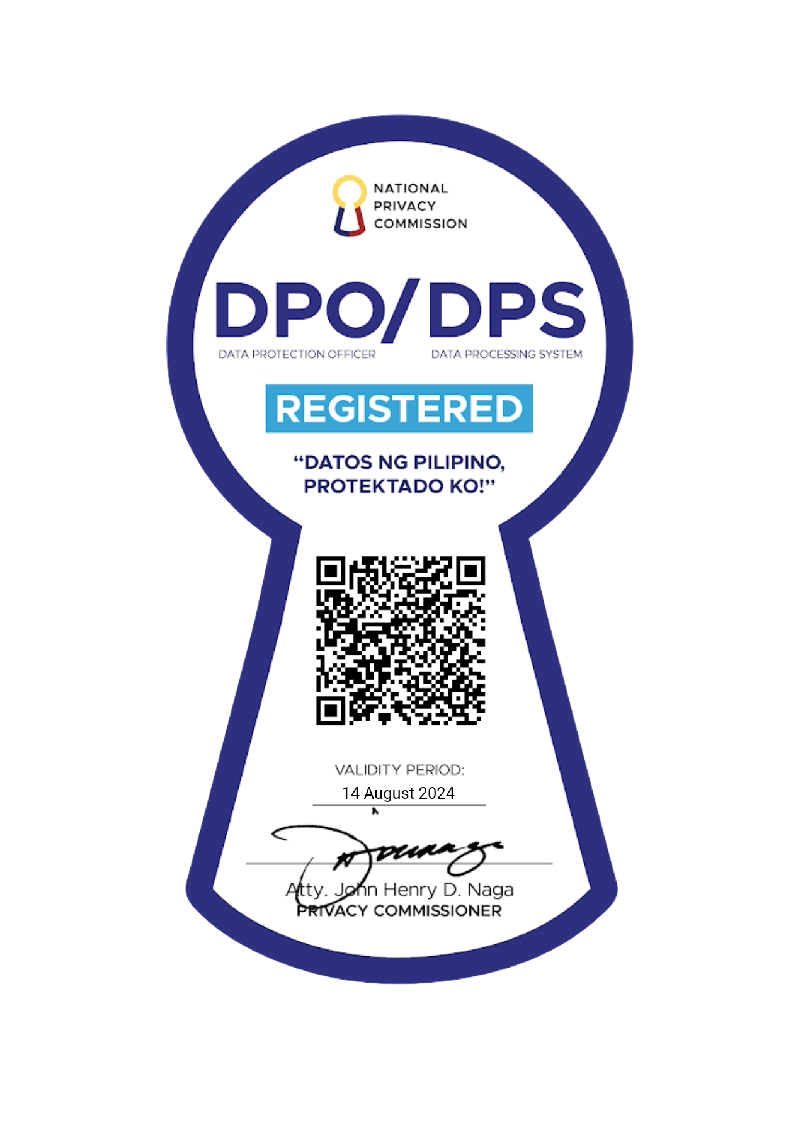-
About Us
Probe CX is a tech-powered, global customer experience organisation that amplifies human capabilities with technological excellence.
-
Vision and Culture
We help our clients become modern digital organisations by combining the latest technology with people, process and data.
-
Executive Team
Meet the team with unmatched experience committed to helping organisations create environments for digitally-enabled CX to thrive.
-
Compliance
Industry-recognised certifications to protect what matters most to our clients and their customers.
-
Locations
Over 19,000 team members delivering exceptional customer experiences across five countries.
-
Reasons to choose Probe CX
The top nine reasons to get more closely acquainted with Probe CX.
TECHNOLOGY & TRANSFORMATION SERVICES
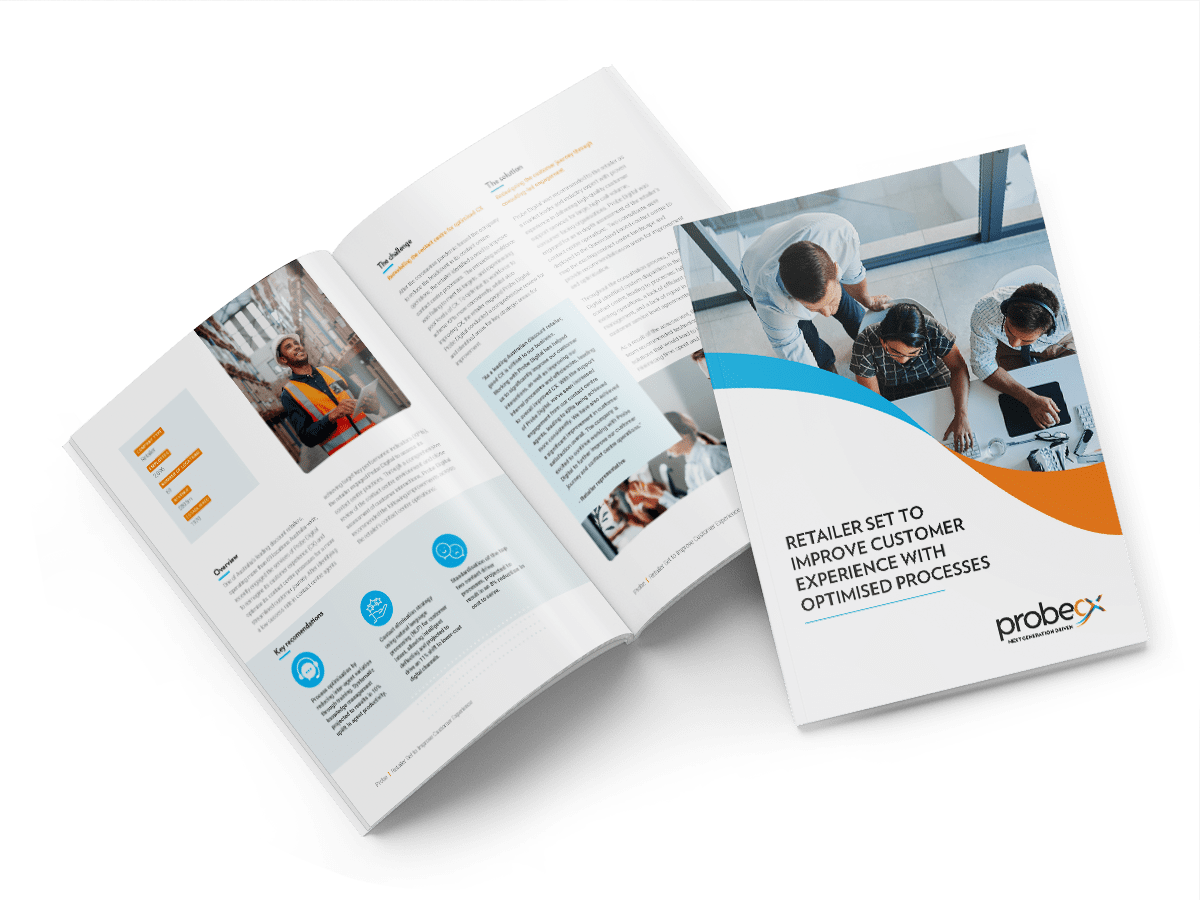 Creating exceptional customer experiences by 'doing it better'
Creating exceptional customer experiences by 'doing it better'
Optimise your customer experience by designing, deploying and managing digital solutions customised to your unique needs.
Continue reading- Blog
- The ultimate list of customer service statistics
The ultimate list of customer service statistics
In the ever-evolving business landscape, digital transformation (DX) has garnered immense attention, driven by the need for competitiveness in a digital era. Amidst this, the spotlight has turned to customer experience (CX) as a pivotal factor. The contemporary business world acknowledges that CX stands as a linchpin for success, leading to unprecedented investments.
This blog delves into the realm of CX metrics, explores the potential of outsourcing and examines technological trends shaping CX and the broader business process outsourcing (BPO) sector. Through compelling statistics and insights, this blog highlights CX's central role in shaping modern business strategies

With that in mind, companies are investing in CX like never before. When CRM provider SuperOffice asked almost 2,000 business professionals to share their No. 1 priority for the next five years, almost half nominated customer experience.
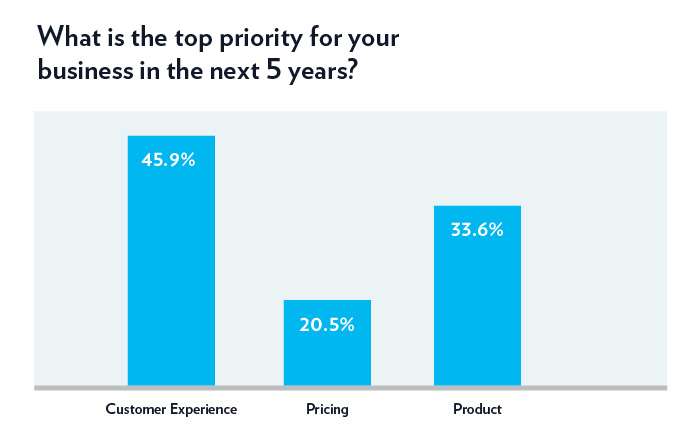
Source: www.superoffice.com/blog/customer-experience-statistics/
They know that a positive customer experience is good for business and that’s because happy customers spend more money.
When PWC surveyed 15,000 people across 12 countries they found 73% of consumers believe CX is an important factor in their purchasing decisions. In terms of dollars and cents, 43% of respondents said they would pay more for greater convenience and 42% would pay more for friendly, welcoming customer service. The power of CX was further reinforced by PWC’s finding that 65% of US customers find a positive experience with a brand to be more influential than great advertising.
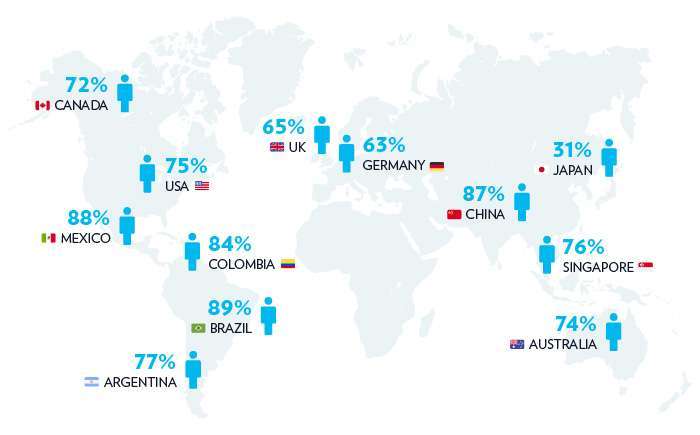
Source: Experience is everything: Here’s how to get it right (pwc.com)
Such numbers are just the tip of the iceberg when it comes to highlighting how important CX is in the current business environment. Coupled with statistics that reinforce the benefits to be gained from outsourcing, we have compiled a wealth of data from trusted sources to show why there has never been a more important time to focus on customer experience – and how you can deliver it.
The Power of CX
At its core, customer experience is a consumer’s perception of how a company treats them. Do CX well and there is the opportunity for customers to feel loyalty towards a brand, keep doing business with you and recommend your services to others. Do CX poorly and there is every chance they will never be sighted again – and tell their family, friends and colleagues why that is the case.
In the words of respected advisory group Gartner, CX is the new marketing battlefront. Gartner found that more than 80% of marketers expected to be competing mostly or completely on the basis of CX by 2020. Just 10 years earlier it was 36% lower.
The harsh reality for businesses is customers have never expected more when it comes to CX. Research has found that 68% of CX experts strongly believe that expectations from customers are rising, while 43% consider customers more impatient than ever before. The same survey found 47% of CX executives believe it is getting harder to please customers and more than half accept that consumers are more willing than ever to switch brands if unsatisfied.
The good news is organisations do not have to look far to find out what customers do want. This generation of consumers is not backwards in coming forwards and the modern-day customer is more than happy to share their thoughts on what works in the CX space. This was evident in Conversocial’s The State of Customer Experience 2020 Report, which, amid a myriad of insightful statistics, found:
- 94% of survey respondents believe companies that deliver excellent customer experience over messaging channels are more likely to have repeat customers
- 96% of consumers say a good customer experience over messaging channels is at least somewhat important to their brand loyalty
- 5% of consumers would be more favourable to a brand if it notified them of a service issue proactively but 22% of these consumers have never experienced this before
- 43% of consumers believe the most important aspect of a good customer service experience is support being offered in real-time with the issue being resolved effortlessly
- 39% of consumers say the most infuriating aspect of a bad customer service experience is long hold/wait times that make it difficult to connect with an agent;
- 49% of consumers feel engagement over their preferred contact channel is the most important aspect of a good customer experience;
- 39% of consumers believe the most infuriating aspect of a bad customer experience is the misuse of their data to mass-market them
- 68% of consumers feel brands should know their prior service history in all interactions, and
- 94% of consumers feel brands should allow customers to provide feedback on their experiences.
This feedback highlights why CX has never been a greater focus for businesses and why an increasing number are looking to customer satisfaction measurement tools (aka CX metrics) to help collect feedback, make changes and improvements and ultimately deliver a more pleasant customer journey.
CX Metrics
Consulting firm Lee Resource International conducted a study that unearthed a statistic that should send a shiver down the spine of any CX executive – for every customer complaint there are 26 other unhappy customers who remain silent. It is not good enough to simply wait for customer complaints. Rather, successful organisations actively seek feedback so they can avoid the following outcomes that happen after a poor customer experience:
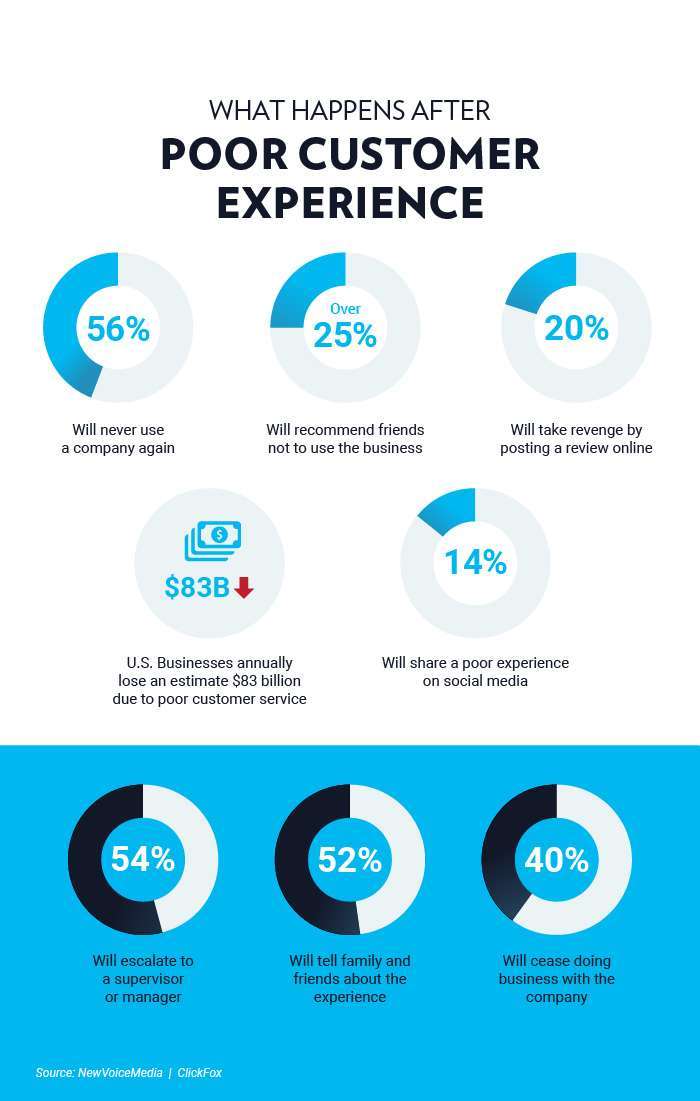
Customer satisfaction metrics such as NPS, CSAT and CES are vital for ensuring businesses can mitigate such negative feedback that may prove harmful for their bottom line. Here is a brief overview of each:
- Net Promoter Score (NPS) – NPS surveys are short and easy and can be sent during any stage of the customer lifecycle by various survey channels (eg: email, web, text message). The surveys feature a question such as ‘How likely are you to recommend our company to a friend or colleague?’, with respondents using a 0-10 scale (Very Unlikely to Very Likely) and their collective responses resulting in an NPS score. Subsequent open-ended questions (eg: What can we do to improve your customer experience?) can also offer additional insights.
- Customer Satisfaction Score (CSAT) - CSAT surveys are ideally sent when a business wants to find out how happy clients are with an action it took or certain aspects of its products/services (eg: after a client has completed the onboarding process). The surveys normally feature a question asking clients how satisfied they are with an aspect of the brand, with respondents usually answering in the “Very Satisfied – Very Unsatisfied” range. Multiple and open-ended questions can be used in the same survey and the CSAT score is an average based on the results.
- Customer Effort Score (CES) – the CES metric is used to measure customer satisfaction levels by focusing on the effort customers make to interact with a business’s services and products. The idea is for the survey to help determine if customers have a hard time performing certain actions when interacting with the brand and then streamline processes according to the survey data. CES surveys are usually used after a client interacted with customer support, immediately after a customer interacted with a product/service and made a purchase or acquired a subscription, or when a business wants to measure the overall experience consumers have with their products/services.
Benefits of Outsourcing Your CX
Outsourcing CX, and other roles to a managed operations or BPO provider is an increasingly effective way for organisations to strengthen their CX. Deloitte’s 2020 Global Outsourcing Survey, which interviewed 40 executives both before and after the start of the COVID-19 pandemic, found cost reduction remains the primary objective to outsourcing.
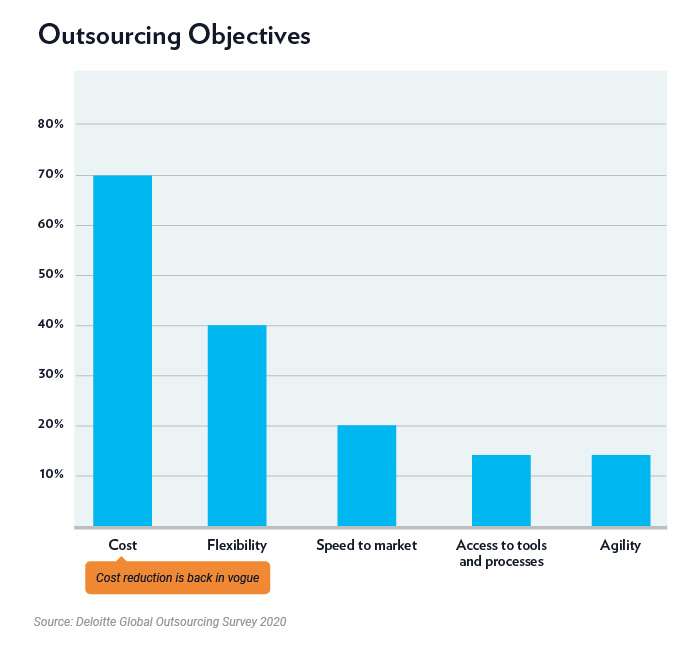
Efficiency increases is another key driver for small businesses to outsource, as evidenced by Clutch’s 2019 Small Business BPO Survey, which found 24% of businesses surveyed said the practice allowed them to manage more projects yet still maintain clarity, quality and a fresh state of mind.
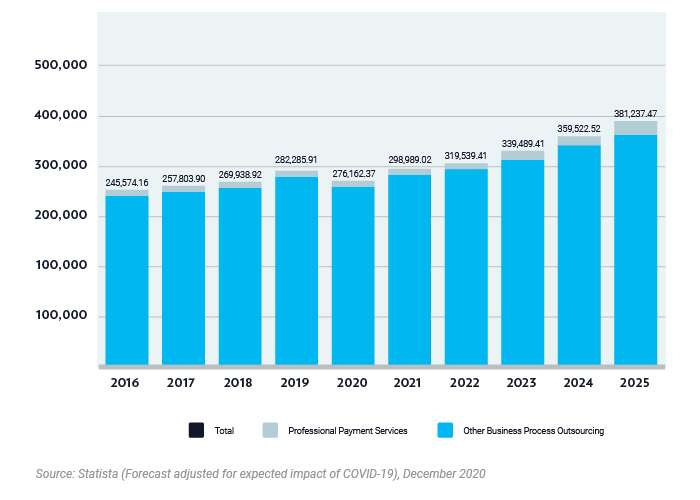
The combination of cost reductions and efficiency increases means businesses that outsource are able to dedicate more time and greater staff support to scaling and improving their services and offerings, which is great news for consumers when it comes to CX. Given that, it is little wonder Statistica has projected that revenue in the BPO sector will experience an expected annual growth rate of 6.7% by 2025, reaching an approximate value of US$381,237.4 million.
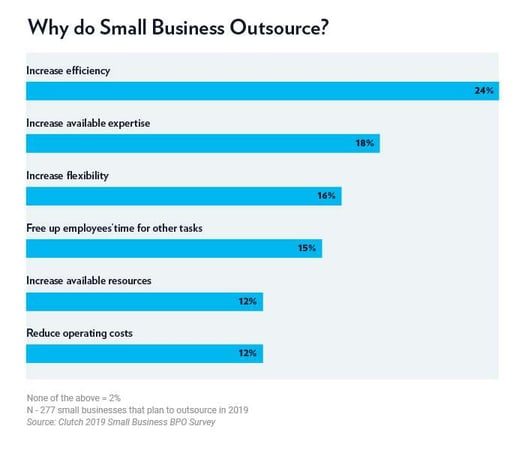
Trends in CX and BPO
Not surprisingly, companies are investing more money than ever on CX technologies with such spending expected to reach $641 billion in 2022, compared to about $511 billion only three years earlier. This investment is supported by a CMSWire survey that showed professionals expect artificial intelligence (AI) and machine learning (ML) to significantly impact their organisation’s CX experience, with the two main areas relating to gaining actionable customer insights (21%) and enabling customer self-service (20%).
In much the same way that more than 90% of organisations are planning to deploy voice and other AI-powered technologies to provide an effortless CX by 2022, the BPO sector is embracing technological innovations to enhance products and services including:
- Robotic Process Automation (RPA): using bots and AI on a user interface is allowing BPO service providers to complete work faster at a cheaper rate, particularly mundane and traditionally time-consuming tasks. The industry’s leaders are working to make RPA a standard element of their client service portfolios to ensure innovation, improve productivity and deliver financial benefits.
- Social Media Management Tools: while the customer service industry was previously dependent on websites and telephones for engagement, social media now provides an unprecedented opportunity to access consumer data and feedback in real-time. BPO service providers are investing in social media tools and teams that can deal with customer grievances much faster and ensure higher customer satisfaction and better CX
- Cloud Computing: according to Forbes, about 77% of enterprises had at least one app or part of their computing infrastructure in the cloud in 2018 and that has only increased on the back of the COVID-inspired rush to remote working. The flexibility and scalability that cloud-based BPOs offer onshore businesses will continue to drive the adoption of such services as cloud computing becomes more mainstream and cost-effective.
Learn more about how to increase customer loyalty and streamline the customer journey in this tip sheet that explores Critical Success Factors to Fast-Track Growth.
THE STATISTICS
The importance of CX in business
- 80% of marketers expected to be competing mostly or completely on the basis of CX by 2020, whereas,10 years earlier, it was 36% lower
- 68% of CX experts strongly believe that expectations from customers are rising, while 43% consider customers more impatient than ever before.
- 47% of CX executives believe it is getting harder to please customers and more than 50% accept that consumers are more willing than ever to switch brands if unsatisfied
- The number one priority for the 49.5% of business professionals over the next 5 years is customer experience
- 73% of consumers believe CX is an important factor in their purchasing decisions
- 43% of respondents said they would pay more for greater convenience and 42% would pay more for friendly, welcoming customer service
- 24% of businesses said that outsourcing CX has allowed them to manage more projects while maintaining clarity, quality and a fresh state of mind
The impact of bad CX
- 39% of consumers say the most infuriating aspect of a bad customer service experience is long hold/wait times while another 39% believe it to a misuse of data in mass-marketing
- 56% of consumers who suffer a bad customer experience claim they will never use the company again and 25% will not recommend the business to friends
- 20% of consumers will take “revenge” by posting a review online and 14% will share a poor experience on social media
- U.S. businesses annually lose an estimated $83 billion due to poor customer service
- 54% of consumers will escalate poor CX to a supervisor or manager, 52% will tell family or friends about the bad experience and 40% will cease doing business with the company
The effects of good CX
- 65% of US customers find a positive experience with a brand to be more influential than great advertising
- 96% of consumers say a good customer experience over messaging channels is at least somewhat important to their brand loyalty
- 5% of consumers would be more favourable to a brand if it notified them of a service issue proactively but 22% of these consumers have never experienced this before
- 43% of consumers believe the most important aspect of a good customer service experience is support being offered in real-time with the issue being resolved effortlessly
- 49% of consumers feel engagement over their preferred contact channel is the most important aspect of a good customer experience
- 68% of consumers feel brands should know their prior service history in all interactions
- 94% of consumers feel brands should allow customers to provide feedback on their experiences
- Customers who experience positive CX are 54% more likely to make another purchase
Trends in CX and BPO
- CX spending is expected to reach $641 billion in 2022, compared to about $511 billion only three years earlier
- 90% of organisations are planning to deploy voice and other AI-powered technologies to provide an effortless CX by 2022
Related Articles
Shared Services
Probe CX navigated the COVID-19 work-from-home debate.
Following the Contact Centre Week interview, Probe CX's CEO Andrew Hume discusses the work-from-home mobilisation of its global organisation and what it means for the future of work.
Shared Services
4 ways to manage overflow
Top overflow solutions to help improve your overall customer experience in times of peak demand.
Intelligent Automation
What contact centres in 2028 could look like with Generative AI
Discover a world where technology is helping change the customer experience conversation for contact centre managers, agents and callers.
© Copyright 2024 Probe CX | All Rights Reserved
Privacy Policy | Financial Hardship Policy | Whistleblower Policy | Complaints Procedure | Supplier Code of Conduct | Make a Payment | Client Login






